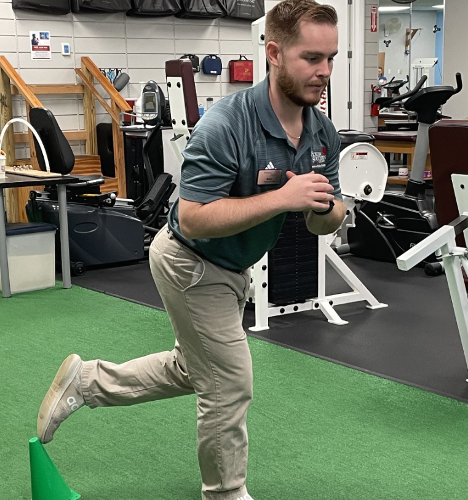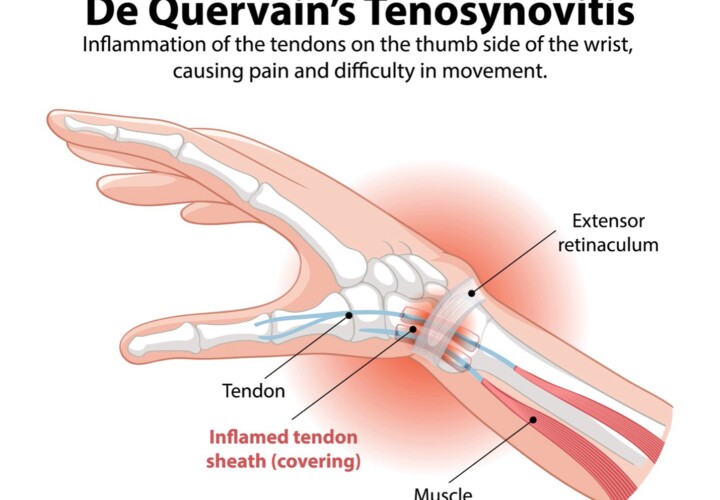Plantar Fasciitis and Physical Therapy
Plantar fasciitis is a degenerative condition of the plantar fascia, a dense connective tissue that supports the arch of the foot and extends from the heel to the toes. It is one of the most common causes of heel pain and can significantly impact daily activities such as walking, running, or standing for extended periods. Individuals with plantar fasciitis often experience sharp heel pain, especially with their first steps in the morning or after prolonged periods of sitting. Other symptoms may include limited ankle mobility, calf tightness, and worsening pain when walking barefoot or climbing stairs.
Common Causes of Plantar Fasciitis
Plantar fasciitis can develop due to several factors, including:
- Sudden Increase in Activity: Engaging in high-impact activities such as running, walking long distances, or standing for extended hours without proper endurance training can overload the plantar fascia.
- Altered Foot Mechanics: Abnormal gait patterns, flat feet, high arches, or excessive inward rolling of the foot (overpronation) can place additional strain on the plantar fascia.
- Poor Footwear Choices: Wearing unsupportive shoes, particularly those lacking proper arch support or cushioning, can contribute to plantar fascia irritation.
- Tight or Weak Muscles: Tightness in the calf muscles and Achilles tendon can lead to restricted ankle movement, increasing stress on the plantar fascia. Weak foot and ankle stabilizers can also contribute to poor foot posture and mechanics.
- Excess Body Weight: Increased body weight places greater stress on the plantar fascia, increasing the likelihood of microtears and inflammation.
- Occupational and Lifestyle Factors: Jobs that require prolonged standing or walking on hard surfaces can contribute to plantar fasciitis development.
Treatment Options for Plantar Fasciitis
Effective management of plantar fasciitis focuses on reducing pain, promoting healing, and preventing recurrence. Some common treatment options include:
- Rest and Activity Modification
Reducing high-impact activities that aggravate heel pain, such as running or prolonged standing, allows the plantar fascia to heal. Low-impact exercises such as swimming and cycling can be alternatives during recovery.
- Pain and Inflammation Management
Applying ice to the heel for 15-20 minutes several times a day can help reduce inflammation and discomfort. Over-the-counter pain relievers like NSAIDs may also be recommended to manage pain.
- Stretching and Mobility Exercises
Proper stretching can help relieve tension in the plantar fascia and calf muscles, improving overall foot mobility. Common stretching exercises include:
- Calf Stretch: Stretching the gastrocnemius and soleus muscles to improve ankle mobility.
- Plantar Fascia Stretch: Gently stretching the bottom of the foot to reduce tightness and discomfort.
- Towel or Toe Stretch: Using a towel or hands to pull the toes toward the shin to stretch the fascia.
- Strengthening Exercises
Strengthening the foot and lower leg muscles helps improve stability and biomechanics, reducing excessive strain on the plantar fascia. Examples include:
- Toe Scrunches and Marble Pickups: Strengthening the intrinsic foot muscles to support the arch.
- Calf Raises: Improving strength in the gastrocnemius and soleus muscles for better foot and ankle function.
- Arch Strengthening Exercises: Strengthening the posterior tibialis muscle to support the arch and improve foot posture.
- Footwear and Orthotic Support
Proper footwear plays a crucial role in preventing and managing plantar fasciitis. Supportive shoes with adequate arch support, cushioning, and shock absorption help minimize strain on the plantar fascia. Custom orthotics or insoles may also be recommended to provide additional foot support and correct biomechanical issues.
- Manual Therapy and Soft Tissue Mobilization
Hands-on techniques such as massage, myofascial release, and joint mobilization can help reduce pain, improve tissue flexibility, and restore normal foot mechanics.
- Taping and Bracing
Taping techniques such as low-dye taping can provide temporary support to the arch and reduce strain on the plantar fascia. Night splints may also be recommended to keep the foot in a dorsiflexed position while sleeping, helping to stretch the fascia and reduce morning pain.
How Hohman Rehab Can Help
At Hohman Rehab, our team of experienced Physical Therapists specializes in treating plantar fasciitis with a personalized approach to care. We utilize evidence-based treatments to help patients recover quickly and return to their daily activities pain-free. Here’s how we can assist you:
- Comprehensive Assessment
Our therapists will conduct a thorough examination to assess:
- Foot and ankle mobility
- Muscle strength and flexibility
- Gait and walking mechanics
- Footwear choices and arch support needs
- Individualized Treatment Plans
Based on your assessment, we will create a customized rehabilitation plan, incorporating:
- Manual Therapy: Hands-on treatment to address soft tissue restrictions and improve mobility.
- Targeted Stretching and Strengthening: Exercises tailored to your specific deficits to restore balance and function.
- Education on Proper Foot Mechanics and Posture: Guidance on optimal movement patterns to reduce strain on the plantar fascia.
- Footwear and Orthotic Recommendations: Assistance in selecting appropriate shoes or custom orthotics for better arch support.
- Gait and Biomechanical Training
For patients who experience plantar fasciitis due to poor running or walking mechanics, we offer gait analysis and retraining strategies to improve movement efficiency and reduce stress on the foot.
- Pain Management and Recovery Strategies
We use techniques such as ice therapy, taping, and neuromuscular re-education to alleviate pain and promote tissue healing.
Preventing Plantar Fasciitis Recurrence
To minimize the risk of recurring plantar fasciitis, we emphasize:
- Gradual Return to Activity: Avoiding sudden increases in activity levels and allowing the foot to adapt gradually.
- Regular Stretching and Strengthening: Maintaining flexibility and strength in the foot and lower leg muscles.
- Proper Footwear Choices: Wearing supportive shoes designed for your foot type and activity level.
- Good Postural Habits: Ensuring proper alignment and weight distribution during standing and walking.
Get Relief from Plantar Fasciitis with Hohman Rehab
If heel pain is limiting your mobility and daily activities, don’t wait to seek treatment. Our team at Hohman Rehab is dedicated to helping you find relief and regain function through expert physical therapy care. Contact us today to schedule an evaluation and start your recovery journey!
Our Locations:
- Clermont Office: 236 Mohawk Road, Clermont, FL 34715
- Ocoee Office: 11095 W. Colonial Drive, Ocoee, FL 34761
- Apopka Office: 125 S. Park Ave., Apopka, FL 32703
Phone: 855-404-6908 | Fax: 352-404-6909




